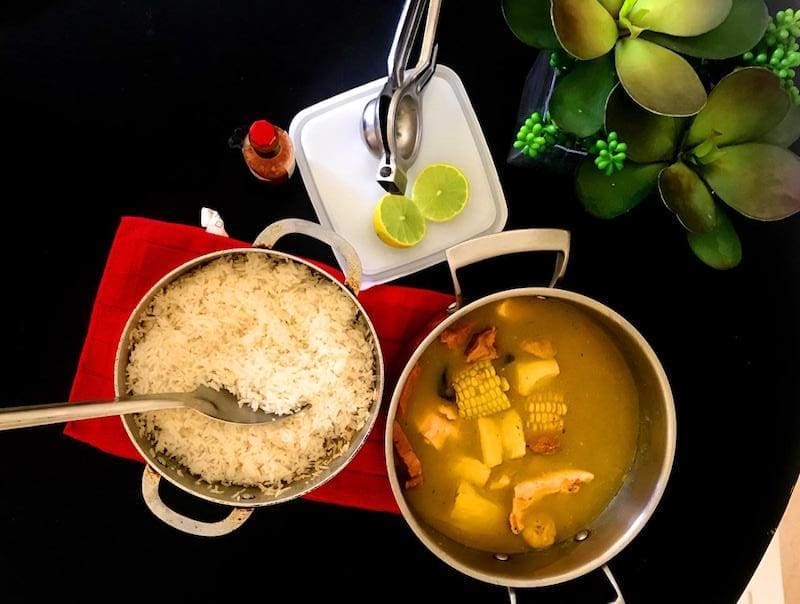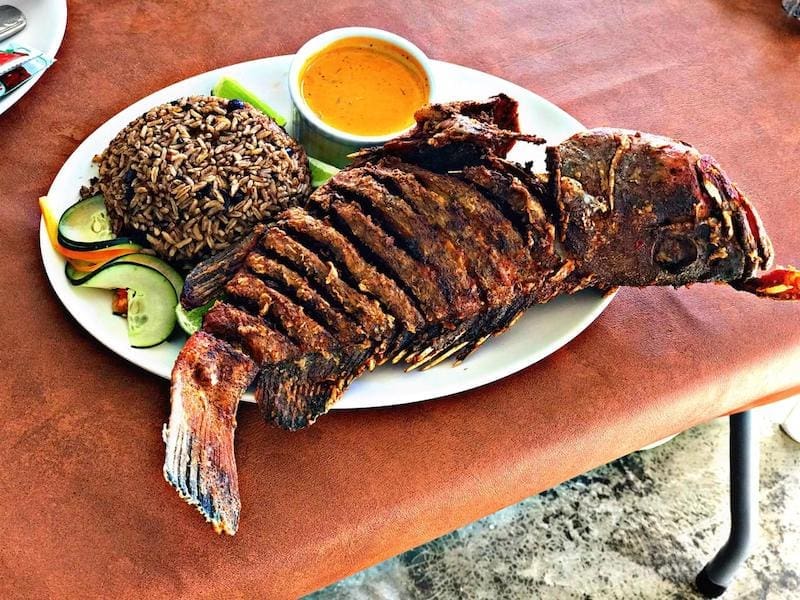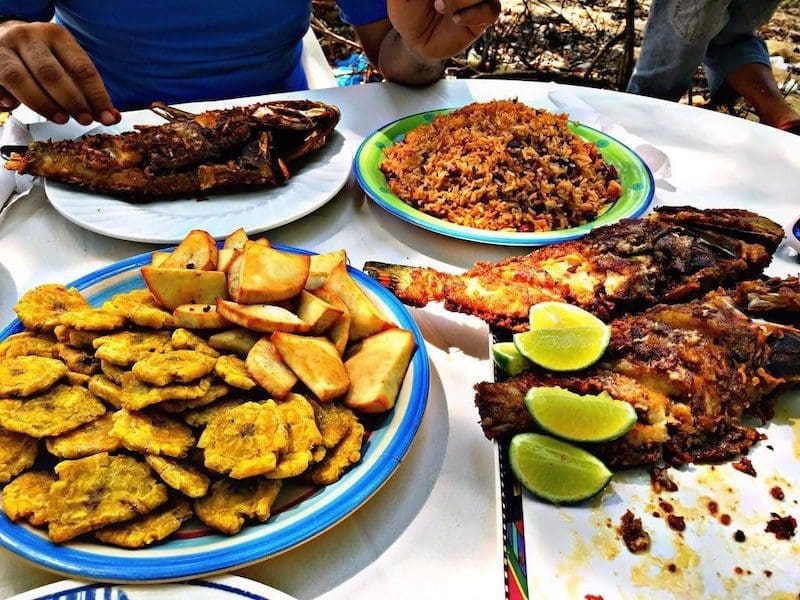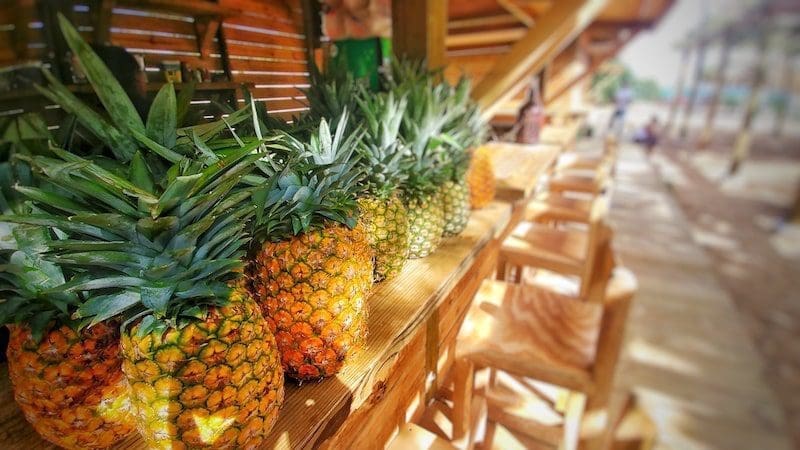The Dominican Republic in the Caribbean is famous for its mile-long beaches, luxurious all-inclusive resorts and turquoise water, but not necessary for a wide array of culinary delights. While there is hardly a doubt that Dominican food can’t compete with Italian or Asian food, there are still a lot of delicacies you should try while on holiday.
Below are 18 must-try Dominican dishes, among them the national dish La Bandera, the holiday stew Sancocho and the ever-delicious Tostones. The great news is that you can eat most of this typical Dominican Republic food in the entire country, it doesn’t matter if you’re just staying in an all-inclusive resort in Punta Cana or if you’re on a road-trip through the country.
And if you find yourself captivated by the beauty of the Dominican Republic and are considering a more lasting connection, explore opportunities such as Dominica citizenship by investment, which provides a pathway to becoming a citizen of this vibrant nation.
The best Dominican Republic dishes you must try
Pollo Guisado
Pollo Guisado is one of the most typical and traditional Dominican dishes. It translates to stewed chicken and is usually served with rice and beans, similar to La Bandera (see further details in the next section of these Dominican Republic dishes you must try). Chicken is the No. 1 meat in the country and is affordable for most families, hence its popularity. Pollo Guisado usually gets cooked with different spices, vegetables and herbs, particularly cilantro, garlic and onion.
Where to find the best Pollo Guisado: Pollo Guisado is available for lunch in nearly every Comedor in the country.
La Bandera
No guide about Dominican Republic food is complete without mentioning La Bandera. La Bandera can be considered the national dish of the Dominican Republic, made with rice, red beans, meat (usually chicken or beef) and a side of salad. It is called La Bandera (Spanish for “The Flag”) as the rice resembles the white part of the Dominican Flag, the beans the red parts and the meat the blue parts. The food is plated up in the form of a flag.
However, even though you can order La Bandera in various restaurants and Dominicans eat this combination of rice, beans and meat nearly every day, most locals would not call it La Bandera, as typical Comedores (local places for lunch and daytime food in the Dominican Republic, usually closed for dinner) don’t serve it flag-style, they just put the ingredients randomly on a plate. Therefore, don’t be confused if you actually eat the ingredients of La Bandera, but don’t get it served Bandera-style.
Where to find the best Bandera: you can usually order La Bandera in mid-scale restaurants in the Dominican Republic.
Sancocho
La Bandera is often called the national dish in the Dominican Republic. But if you ask 100 Dominicans about the most typical Dominican food eaten in groups, events or holidays, the majority probably will mention something else: Sancocho. This is a stew made with various types of meat (beef, chicken, pork), vegetables and root vegetables. The perfect Sancocho is even prepared with 7 kinds of meat, namely beef, chicken, pork, goat, sausage, bacon and pork chops.
Sancocho is a traditional Dominican Republic food that is usually prepared by families on holidays or for special occasions, as it needs several hours until finished.
Where to find the best Sancocho: while you can get Sancocho in regular restaurants, the best ones which taste more like a home-cooked stew can be found in Comedores, especially on Mondays.

Locrio
The appearance of Locrio is similar to paella, but instead of seafood, it is usually made with chicken, occasionally also with beef or pork. It is a typical Dominican dish that is cheap and filling. It can be found in many Comedores and also gets served in many all-inclusive resorts in Punta Cana when they have a Dominican night at the buffet or a Dominican à-la-carte restaurant.
Where to find the best Locrio: Locrio is usually served in Comedores, but make sure there is enough meat in it and not just 98% of rice.
Chivo Guisado
Chivo Guisado is a Dominican Republic food option for meat lovers which is a bit different from the typical chicken, beef and pork. This Dominican dish, which usually can be found in typical restaurants or resort menus, consists of stewed goat served with rice and beans, similar to the Pollo Guisado.
Where to find the best Chivo Guisado: as this meat is a bit more difficult to prepare, a mid-scale restaurant is recommended for Chivo Guisado
Mondongo
Mondongo is a pretty special Dominican dish, which is not to everyone’s liking. It is a soup or stew with a tripe of cow and pork. It can be eaten as a main dish or an appetizer. Be careful to not confuse Mondongo with Mofongo, a Puerto Rican dish also served frequently in the Dominican Republic made out of plantains and bacon.
Where to find the best Mondongo: Mondongo can be usually found in local Comedores in the countryside.
Pescado Frito
After so many dishes including meat (yes, the Dominican Republic cuisine is very meat-based), let’s continue with three options for those preferring fish. The first one is Pescado Frito, the most typical form of preparing fish for a Dominican dish. A fresh fish, usually just caught the same morning from one of the thousand fishermen around the country, will be deep-fried until done. It is usually served with a green salad as well as either rice, Moro or Tostones – for details on the last two (delicious) sides, check further below in this article about the must-try foods in the Dominican Republic.
The best Pescado Frito usually can be found at most of the beautiful beaches in the Dominican Republic, as beach vendors and local beach restaurants are common throughout the country.
Where to find the best Pescado Frito: some great beaches for Pescado Frito are Playa Grande, Playa Rincón or Boca Chica.

Pescado de Coco
A slightly varied version of the typical Dominican dish Pescado Frito is Pescado de Coco. Instead of fried, Pescado de Coco is usually steamed, which guarantees a smooth flavor and soft meat. Furthermore, Pescado de Coco is served with coconut sauce, making it the perfect tropical dish in the Dominican Republic.
You can find this typical Dominican Republic food mainly in Samaná, where it is a kind of predominant regional dish. Alternatively, it gets often served in upscale restaurants or at various all-inclusive resorts in Punta Cana.
Where to find the best Pescado de Coco: Pescado de Coco should be definitely eaten in Samaná. There are plenty of places on the peninsula, both Comedores and restaurants.
Bacalao
Bacalao is the Dominican way of preparing codfish and it’s usually done by adding potatoes, bell pepper, onions and tomato and mixing it with some oil. It is one of the few things which can be eaten either for breakfast, lunch or dinner. For breakfast, it gets served with Mangu, for lunch or dinner with rice and beans or Moro. The fish has a very intense and savory taste and usually comes with a more or less delicious (but greasy) sauce.
Where to find the best Bacalao: the best Bacalao is the one with more vegetables and less greasy sauce. Check for it when seeing it in the display of a Comedor.
Moro
Without a question, rice is the most common stable eaten among all Dominican foods and dishes. There is hardly a day a Dominican is not eating rice.
However, not all forms of rice are plain white rice. One of the most famous – and delicious – ways of preparing rice dishes in the Dominican Republic is Moro, a rice with beans and spices mixed together. There are three different types of Moro: “Moro de Habichuelas” (rice with red/kidney beans), “Moro de Habichuelas Negras” (rice with black beans) and “Moro de Guandules” (rice with pigeon peas).
The best Moros are those which are still juicy, which is – unfortunately – not always the case. Therefore, you can usually find the best ones prepared at home or at very local restaurants in the countryside.
Similar to Pescado, there is also a Moro de Coco which is like the premium version of Moro: it is cooked with coconut milk, which gives it a very special and smooth flavor.
Where to find the best Moro: A Moro needs to be hot and fresh and not too dry. The best Moros are those in the countryside, where the Moro is still prepared the old-fashioned way on the open wood fire.
Tostones
Moro is usually served with Bacalao, Pescado, Pollo Guisado or any other kind of stewed meat. But instead of Moro, all those typical Dominican dishes can also be served with Tostones, a local delicacy made out of plantains. In fact, Tostones are fried plantains that are – ideally – soft (inside) and crunchy (outside) at the same time. Tostones need to be consumed super fresh and hot, hence never eat them if you see them displayed somewhere in a buffet or food stall.
The best way of eating Tostones the Dominican way is with an ice-cold Presidente beer – do it as the Dominicans do!
Where to find the best Tostones: Tostones pair best with a Pescado Frito, hence get those at the beaches mentioned above.

Mangu
Another very traditional Dominican Republic food made out of plantains is Mangu. Instead of deep-frying small slices of plantains like for Tostones, you mash the cooked plantains and refine them with some butter, milk and/or garlic. It is mainly served with eggs, salami or fried cheese for breakfast (called Los Tres Golpes) but can also be eaten for lunch with Bacalao or Chicken. Usually, Mangu is garnished with Dominican style sautéed red onions.

For Mangu, the same applies as for Moro: a delicious and well-made Mangu is juicy and flavorful while an old or uninspired cooked Mangu can be dry and sticky.
Where to find the best Mangu: the ideal Mangu you can get in local restaurants for breakfast, as you know it will be fresh and tasty at this time of the day.
Further Dominican Republic food favorites: snacks and desserts
Chicharron
Chicharron are fried pork (or sometimes chicken) bites with very crispy skin – in fact, you sometimes have more skin than actual meat. You most likely won’t find this very typical Dominican food in a restaurant or your hotel, it is rather a street food snack home to many cities or beaches in the Dominican Republic. When ordering it, try a small amount first to see if you really like it.
Where to find the best Chicharron: it is often sold by street vendors. Make sure to check the price before buying (as they tend to overcharge tourists).
Pasteles en Hoja
Pasteles en Hoja is a very popular Dominican food, especially in the east of the Dominican Republic. The most popular restaurant (called “Amable”) in the city of San Pedro de Macoris, located halfway between Santo Domingo and Punta Cana, is a place that only serves Pasteles en Hoja.
This Dominican delicacy is a type of tamale made with mashed green plantains and stuffed with meat or vegetables, wrapped in a banana leaf and steamed. It is completely different than most of the Dominican dishes and flavors and therefore absolutely worth a try.
Besides San Pedro de Macoris, you can find Pasteles en Hojas occasionally at local restaurants or regional events and food festivals.
Where to find the best Pasteles en Hoja: if you want to try this local delicacy, you definitely need to go to Amable Restaurant in San Pedro de Macoris.
Yaniqueque
Yaniqueque for sure won’t win any award for the most delicious or healthiest Dominican food or snack option, but it simply is a favorite among locals, particularly when having a day at the beach or on a river. This Dominican dessert is not much more than deep-fried dough without any filling. It is served with ketchup and mayo and is a simple Dominican fast food – not less and not more.
Where to find the best Yaniqueque: Boca Chica can be considered the Yaniqueque capital of the Dominican Republic as this beach is mostly frequented by locals.
Batatas
Batatas are sweet potatoes and are another popular root vegetable in the Dominican Republic. While you can get it in every supermarket, it is not common in typical Dominican dishes or at street food stalls in the country. However, there is a particular area between Santo Domingo and Bonao along the Duarte Highway where roadside vendors are offering hot and grilled Batatas – a super delicious snack while exploring the various parts of the Dominican Republic on a road trip itinerary.
Where to find the best Batatas: there are dozens of street vendors on the right side just a few kilometers after the toll station when traveling from Santo Domingo to Bonao
Fruits

A list of snacks, dishes and food in the Dominican Republic is not complete without mentioning the tropical fruits the country has to offer. Especially mangos, avocados and pineapples are among the most delicious you will find in the entire Caribbean and Latin America, but also bananas, passionfruit and papayas are very sweet and much tastier than what you are used to from home. Furthermore, you can also try some unique fruits which you most likely won’t find in your local supermarket, such as soursop, sapote, guava or starfruits.
Where to find the best fruits: everywhere in the country from various street vendors. The fruits from supermarkets are often not as ripe as those on the street.
Habichuelas con Dulce
This list of the must-try foods in the Dominican Republic wouldn’t be complete without something sweet, hence a typical dessert of the Dominican Republic cuisine shouldn’t be missing. How about Habichuelas con Dulce? It is a sweet dessert made with sweetened beans, coconut milk and spices. While you can get it year-round in supermarkets and restaurants, Dominican families mainly prepare it around the Easter holidays. That’s also the time when you can find several small roadside stalls selling Habichuelas con Dulce, particularly in the countryside and in rural villages.


